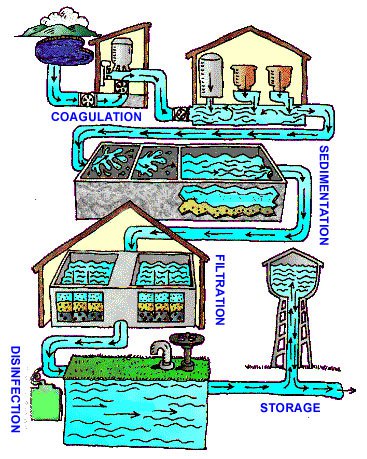Water Quality
The US Environmental Protection Agency (EPA) regulates drinking water quality via the Safe Drinking Water Act. Drinking water quality standards are known as maximum contaminant levels (MCLs) for contaminants that may affect our health, such as benzene which is a known carcinogen but is also a naturally-occurring hydrocarbon. Secondary MCLs (SMCLs) are drinking water quality standards based on the taste and aesthetics of the water, but do not necessarily have significant health impacts. Public water suppliers are required to test for MCLs and SMCLs on a routine basis to ensure the continued delivery of high-quality water to their customers. The EPA website lists drinking water MCLs and SMCLs here EPA Drinking Water Contaminants - Standards and Regulations.
The sources of drinking water may include rivers, lakes, streams, ponds, reservoirs, springs and groundwater wells. As water travels over the surface of the land or through the ground, it dissolves naturally-occurring minerals and, in some cases, radioactive material, and can pick up substances resulting from the presence of animals or from human activity. Classes of contaminants that may be present in source water include:
- Microorganisms, such as viruses and bacteria, that may come from sewage treatment plants, septic systems, agricultural livestock operations, and wildlife.
- Disinfectants and disinfection by-products that are used to remove or result from removing the microorganisms occur in water
- Inorganic contaminants, such as salts and metals, that can be naturally-occurring or result from urban stormwater runoff, industrial or domestic wastewater discharges, oil and gas production, mining and farming.
- Pesticides and herbicides that may come from a variety of sources such as agriculture, urban stormwater runoff, and residual sources.
- Organic chemical contaminants, including synthetic and volatile organic chemicals that are by-products of industrial processes and petroleum production, and can also come from gas stations, urban stormwater runoff, and septic systems.
- Radionuclides, which can be naturally-occurring or be the result of oil and gas production and mining activities.
As noted previously, there is an almost incomprehensible amount of water on the planet, though only a small portion of this water is considered fresh so that it can be used for drinking water. Most “fresh” water still requires treatment prior to drinking, typically at least disinfection through use of chlorine or a similar disinfectant, but may also involve chemical treatment, filtration, or reverse osmosis to remove natural or man-made constituents. A typical treatment scheme for a drinking water treatment plant would consist of the following steps shown in this figure.

A good overview of drinking water treatment is found on the Center for Disease Control website.
Later we will explore drinking water contaminants that can occur in association with oil and gas production and consider how to monitor for them in private and public supplies. First, we will consider how water is used to generate energy and power.